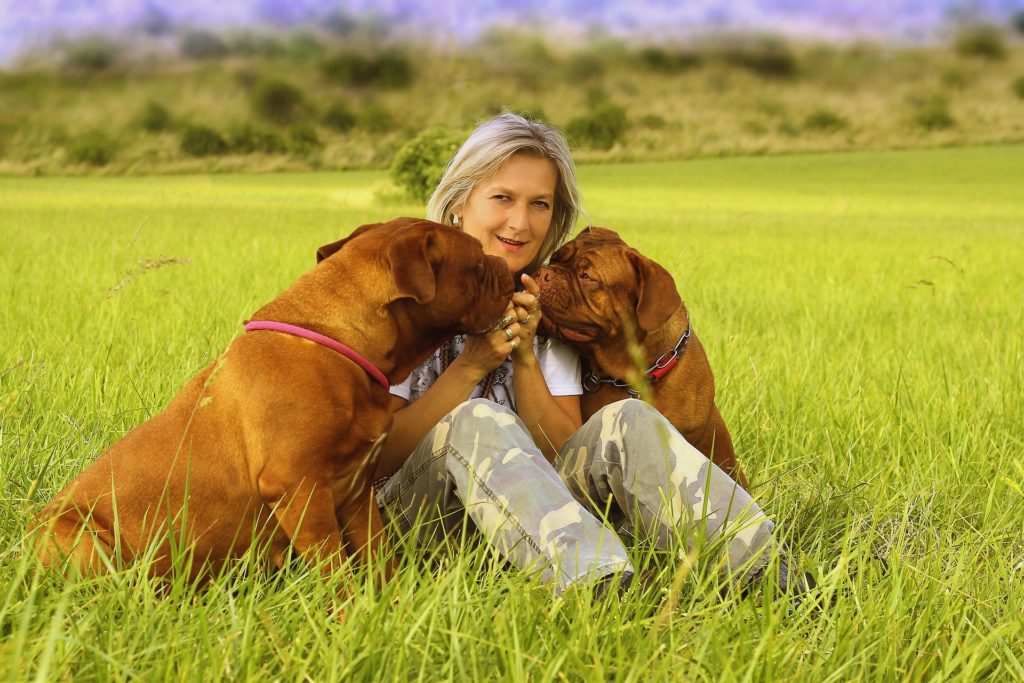Training large dogs requires confidence and care. Dogs can easily pick up on your emotions, which could make them appear as threats; therefore, try to remain as calm as possible around them.
Positive reinforcement and socialization are integral parts of training a large dog, with socialization helping curb aggressive behaviors while leadership being established through harnesses or leashes which provide physical control but must also be combined with obedience training for maximum effectiveness.
Training Tips for Large Dogs
There’s nothing quite so picturesque as seeing a large breed dog tucked securely into your car seat, looking as though a bear were being taken on a ride. Unfortunately, big dogs can also present some significant behavioral challenges; one key way of keeping your pet safe is with proper training – whether at an early age or later through professional services for dog behavior training.
As with any dog training session, it is crucial that you establish yourself as the leader. Giant breeds typically respond better to authoritative voices and firm posture; starting early training with your pup will make this transition smoother as it grows into adulthood.
Your dog must also learn not to jump up on people or other pets out of excitement; such behavior is dangerous both for itself and those around it; it can easily topple an adult human or cause injuries in small children. Obedience training and redirecting its behavior when showing this excited behavior may help.
Staying hydrated, fed, and exercised will also go a long way toward discouraging any destructive or aggressive behavior from occurring. While we never endorse hitting our dogs with hands, giant breed dogs present unique risks of neck injuries when disciplined using this approach.
Obedience Training
Giant breed dogs are incredible intelligent and responsive to commands, but without proper obedience training they can be challenging and very dangerous with dog attacks. Untrained giant breeds are far more likely to cause destruction, knock people over, and terrorize strangers than smaller dogs; therefore it’s essential that these giant breeds be kept under control as much as possible. A firm voice and firm stance will often defuse even aggressive giant breeds – however reinforcements or rewards remain key factors when training any dog; giant breeds are no different!
Teaching obedience exercises such as sit and stay, to a large dog at an early age is often easiest and will ensure they respond reliably no matter where or what’s going on around them. Obedience training also makes necessary activities easier such as brushing, grooming, nail trims, baths etc.
Remember that giant dogs don’t come naturally obedient, so it is crucial that you establish yourself as their leader and give firm commands. A consistent reward system and click training can speed up learning; treats are great motivators for giant breeds as they’re eager eaters!
Agility Training
Agility can be an enjoyable and engaging sport that helps your dog develop agility, balance, flexibility and control. It can also be an excellent way to burn off extra energy for energetic breeds – providing exercise while strengthening your relationship. No matter if it’s for competition purposes or simply fun – agility offers great exercise while strengthening bonds.
Domesticated dogs may spend most of their lives indoors, but their ancestors were hunters that needed to be quick and nimble in order to catch prey quickly and effectively. An agility course provides the ideal setting to stimulate natural instincts and enhance hunting capabilities in our domesticated canines.
If you’re new to agility, taking part in classes will allow both you and your pet to learn the basic rules and practice navigating obstacles together. Classes also help handlers understand all of the finer points of the sport such as connecting different elements into short sequences.
If you don’t have access to an agility course, training your dog at home with obstacles such as tunnels, A-frames and elevated dog walks can still be done successfully. Portable agility obstacles may even come handy on vacation or at outdoor events like dog shows.
Socializing
Socialization of any dog – adult or puppy – early is paramount for its wellbeing and success. Without proper socialization, giant breed dogs could revert back to their wilder roots and attempt to control human interactions within the home. Furthermore, due to their size, giant breed dogs could cause injury by accidentally knocking over people or young children.
Start enrolling your dog in an effective force-free puppy kindergarten class as early as 8 weeks of age; this is particularly essential for giant breeds as they will quickly reach full size and need to learn proper behavior around other dogs and people before reaching that point.
As with anything new and unfamiliar for our canine companions, introduction should be managed carefully and in a controlled environment. Your dog’s natural socialization could bring them joy when meeting new people and other animals – but be patient as you carefully watch their reactions so as to keep your pup safe!
Large dogs tend to be more active than other breeds, making exercise essential. Exercising can help them expend excess energy and be the key to keeping them calm in your home environment. They also have thick coats that require brushing or washes on a regular basis to avoid matting; taking your pup to a professional groomer who specializes in handling large canines could make the experience less nerve-wracking for both of you!




